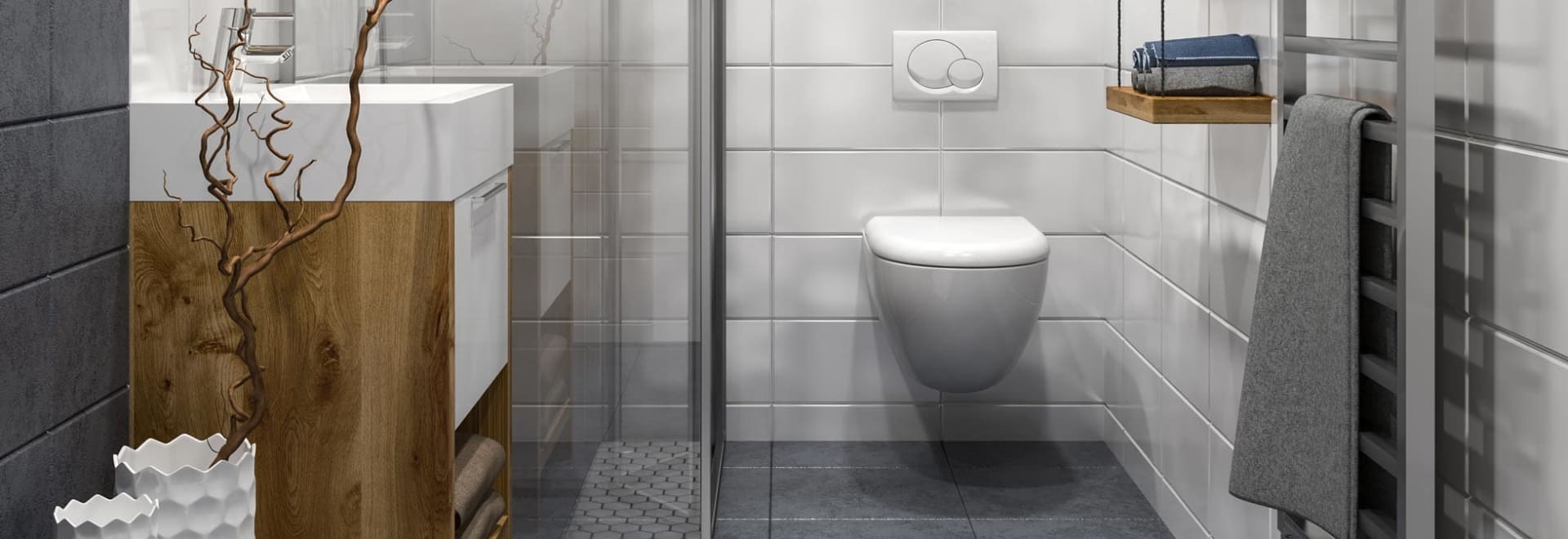
These expensive fixtures look like a smooth update for any bathroom remodel. But are they worth the added expense?
It’s the stuff of a bathroom designer's dream: A sleek, space-saving toilet, absent that unsightly tank, which can be installed at precisely the right height for you. Plus, the nature of the design—a wall-mounted toilet doesn't contact the floor—makes it a breeze to keep the area around it clean.
These elegant commodes hide the plumbing and working parts. The tank, made of lightweight plastic and styrofoam, lives behind the wall, cradled in a cast-iron or steel carrier that gets installed between two studs to provide support. The bowl floats above the floor, anchored through the drywall to the carrier.
If it all sounds a little exotic, that's because these fixtures are far from standard. It's easy to understand why: Installing a wall-hung toilet requires invasive and intensive reconstruction, and once it's in place there's no removing the lid of the tank to fiddle with a finicky flapper—the mechanicals are buried in the wall. It's possible in some scenarios to install an access panel for repairs, but that's a very custom solution.
Still curious? Read on for the pros and cons you'll want to weigh before tearing up your bathroom wall.
Built to CodeWith their compact size, wall-mounted toilets offer more flexibility when designing or updating a bathroom. “These toilets can meet building-code clearances where floor mounted toilets might not,” says John Banta, the CR test engineer who oversees Consumer Reports’ toilet tests.
In some municipalities, buildings codes require at least 21 inches in front of the toilet. Wall-mounted toilets can save as much as 10 inches by moving the tank into the wall. And the bowl itself can be adjusted to sit anywhere from 15 to 19 inches off the ground.
A Costly Alternative
Wall-mounted toilets come at a premium over standard toilets. Expect to pay several hundred dollars more for this type of fixture, not counting the cost of professional insatllation—this is not a do-it-yourself project, notes Banta. "Already you're paying more for this type of toilet, and depending on your circumstances, you might spend several hundred more to move the supply and waste lines or to reconfigure the studs," he says. "It could easily be three times more expensive to switch from an existing floor to a wall-mounted toilet."
Wall-mounted toilets come at a premium over standard toilets. Expect to pay several hundred dollars more for this type of fixture, not counting the cost of professional insatllation—this is not a do-it-yourself project, notes Banta. "Already you're paying more for this type of toilet, and depending on your circumstances, you might spend several hundred more to move the supply and waste lines or to reconfigure the studs," he says. "It could easily be three times more expensive to switch from an existing floor to a wall-mounted toilet."
Down to the Studs
Installing a wall-mounted toilet requires opening a wall, rerouting the waste pipe, and, if you plan to keep the same flooring, patching the tile under your old toilet. You also need to know whether your framing consists of 2x4 or 2x6 studs when choosing the tank, as manufacturers make carriers for both types. "If you're installing one of these in an older home, you would likely need to rework the studs to get them in the proper location for the carrier," says Banta.
Relatively Easy Unclogging
During installation, the tank and the carrier are mounted to the studs and concealed with drywall, with an opening for the flush buttons. Access to the tank is through this opening. If something stops working after installation, the flush panel pops off and an adult-sized hand can reach inside to fix the plumbing.
Installing a wall-mounted toilet requires opening a wall, rerouting the waste pipe, and, if you plan to keep the same flooring, patching the tile under your old toilet. You also need to know whether your framing consists of 2x4 or 2x6 studs when choosing the tank, as manufacturers make carriers for both types. "If you're installing one of these in an older home, you would likely need to rework the studs to get them in the proper location for the carrier," says Banta.
Relatively Easy Unclogging
During installation, the tank and the carrier are mounted to the studs and concealed with drywall, with an opening for the flush buttons. Access to the tank is through this opening. If something stops working after installation, the flush panel pops off and an adult-sized hand can reach inside to fix the plumbing.
source: https://www.consumerreports.org/toilets/the-pros-and-cons-of-wall-hung-toilets/
by Haniya Rae
http://www.thisoldtoilet.com

No comments:
Post a Comment